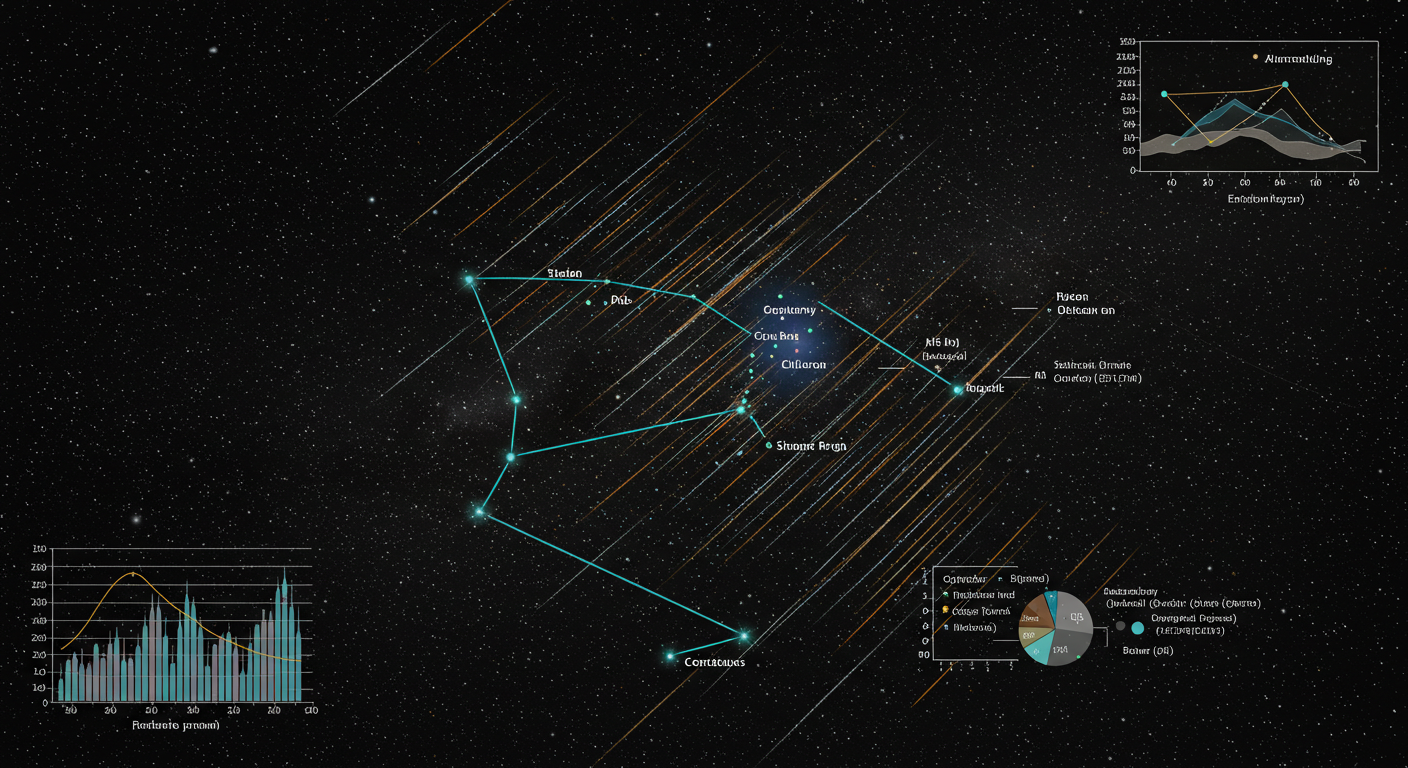The Centaurid meteor shower, commonly called the Alpha Centaurids (ACE), is a faint and irregular display best viewed from the southern sky. It radiates from the constellation Centaurus, with its radiant near Declination –58° and Right Ascension ~14h 04m (14:04). According to AMS data, its active period for 2025 spans February 3 to 20, with a potential peak on February 8–9. During ideal conditions, observers may see up to ~6 meteors per hour
Visibility: Where and When You Can See It
3.1 Hemisphere & Latitude Constraints
Because the radiant sits deeply south (≈ –58° declination), Southern Hemisphere observers are best positioned to view Alpha Centaurids. Those in the Northern Hemisphere up to about 30° N might see faint meteors — but only under optimal conditions. LIVING CORAM DEO+3American Meteor Society+3International Meteor Organization+3
3.2 Time‑of‑Night & Moon Interference
-
Best time to watch: in the pre‑dawn hours, when the radiant climbs highest above the southern horizon. American Meteor Society+2International Meteor Organization+2
-
Moonlight issue (2025): the peak coincides with a waxing gibbous moon (~84%), which substantially suppresses faint meteors. Star Walk+1
-
Tip: plan your observation after moonset, when the sky is darkest.
3.3 Regional Visibility Examples
Here’s how visibility might differ by location:
-
Sydney, Australia: Radiant is well above the horizon; moonlight may drown fainter meteors.
-
Cape Town, South Africa: Favorable southern vantage and lower latitude benefit.
-
Buenos Aires, Argentina: Radiant appears clearer in late pre‑dawn sky.
-
Singapore / Southern Asia: Radiant is low; only the brightest meteors may be visible under ideal skies.
Pro tip: Include a latitude‑based visibility map or a table showing radiant height by region to help readers gauge their observing potential.
FAQ’S
Q1: Can I see the Centaurid (Alpha Centaurid) meteor shower from my location?
It depends on your latitude. Observers in the Southern Hemisphere are best placed to see it. Northern Hemisphere viewers up to about 30° N might catch faint meteors under ideal dark‑sky conditions.Q2: When is the best time to watch the meteor shower in 2025?
The optimal window is in the pre‑dawn hours, when the radiant is highest above the southern horizon and before moonlight brightens the sky.Q3: Will the Moon interfere with observation in 2025?
Yes. The peak of the 2025 shower coincides with a waxing gibbous moon (~84%), which reduces visibility of faint meteors. To offset this, observe after moonset, when skies are darkest.Q4: How many meteors per hour can I expect?
At the peak, if conditions are favorable, you may see up to ~6 meteors per hour. Because this is a minor shower, rates are modest compared to major showers.Q5: Do I need a telescope or special equipment?
No. You can see meteors with the naked eye. Telescopes or binoculars are not helpful because meteor streaks traverse wide paths. For photography or long exposures, a wide‑angle lens, tripod, and remote shutter are more useful.Q6: What direction should I look?
While meteors radiate from Centaurus, they streak across various parts of the sky. Don’t stare exactly at the radiant — instead pick a broad field of view (especially toward the south) and be patient.Q7: How can I improve my chances of seeing meteors?
Choose a dark sky location, away from city lights.
Let your eyes adapt to darkness for 20–30 minutes.
Observe during times when the radiant is highest and Moon is below horizon.
Be patient — meteors may appear sporadically.
Q8: Will meteor activity be the same every year?
No. The Centaurid / Alpha Centaurid shower is irregular, with variable strength from year to year. Some years are weak, others slightly stronger. Expect modest output in 2025.Q9: Is there a parent comet or source body?
The parent body is unknown. Unlike many showers tied to known comets or asteroid debris streams, the precise origin of the Alpha Centaurids remains uncertain.

